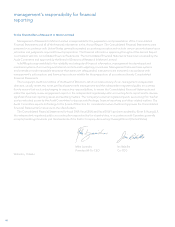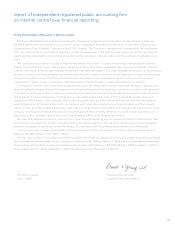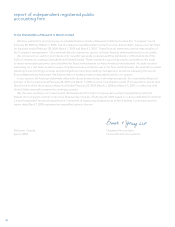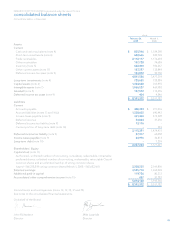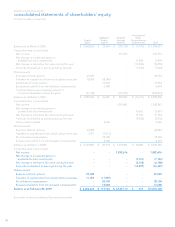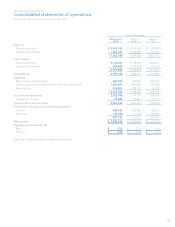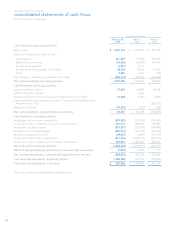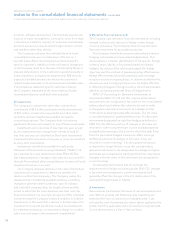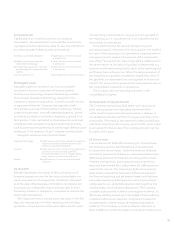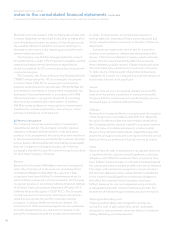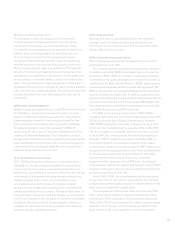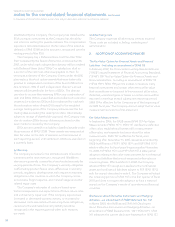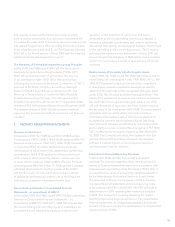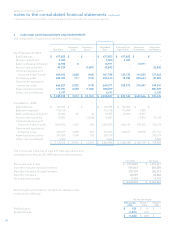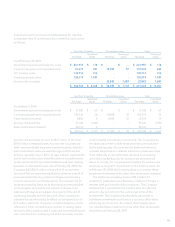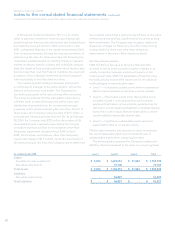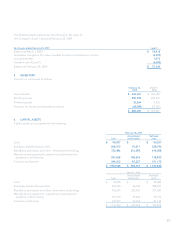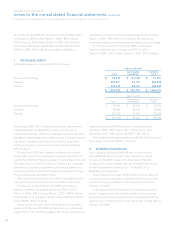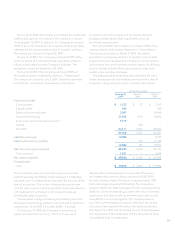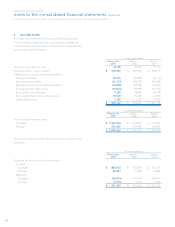Blackberry 2009 Annual Report Download - page 58
Download and view the complete annual report
Please find page 58 of the 2009 Blackberry annual report below. You can navigate through the pages in the report by either clicking on the pages listed below, or by using the keyword search tool below to find specific information within the annual report.56
RESEARCH IN MOTION LIMITED
notes to the consolidated financial statements continued
In thousands of United States dollars, except share and per share data, and except as otherwise indicated
likely than not to be realized. If the Company determines that
it is more likely than not that it will not be able to realize all or
part of its deferred income tax assets in future fiscal periods,
the valuation allowance would be increased, resulting in a
decrease to net income in the reporting periods when such
determinations are made.
The Company uses the flow-through method to account
for investment tax credits (“ITCs”) earned on eligible scientific
research and experimental development expenditures.
Under this method, the ITCs are recognized as a reduction to
income tax expense.
The Company uses Financial Accounting Standards Board
(“FASB”) Interpretation No. 48, Accounting for Uncertainty
in Income Taxes (“FIN 48”) in assessing its uncertain tax
positions and provision for income taxes. FIN 48 clarifies the
accounting for uncertainty in income taxes recognized in an
enterprise’s financial statements in accordance with SFAS
109, and prescribes a recognition threshold of more likely
than not to be sustained upon examination. In addition,
FIN 48 provides guidance on derecognition, measurement,
classification, interest and penalties, accounting in interim
periods and disclosure and transitions.
(p) Revenue recognition
The Company recognizes revenue when it is realized or
realizable and earned. The Company considers revenue
realized or realizable and earned when it has persuasive
evidence of an arrangement, the product has been delivered
or the services have been provided to the customer, the sales
price is fixed or determinable and collectability is reasonably
assured. In addition to this general policy, the following
paragraphs describe the specific revenue recognition policies
for each major category of revenue.
Devices
Revenue from the sales of BlackBerry devices is recognized
when title is transferred to the customer and all significant
contractual obligations that affect the customer’s final
acceptance have been fulfilled. For hardware products for
which software is deemed not to be incidental, the Company
recognizes revenue in accordance with the American Institute
of Certified Public Accountants Statement of Position 97-2,
Software Revenue Recognition (“SOP 97-2”). The Company
records reductions to revenue for estimated commitments
related to price protection and for customer incentive
programs, including reseller and end-user rebates. The
estimated cost of the incentive programs are accrued based
on historical experience, as a reduction to revenue in the
period the Company has sold the product and committed
to a plan. Price protection is accrued as a reduction to
revenue based on estimates of future price reductions and
certain agreed customer inventories at the date of the price
adjustment.
Provisions are made at the time of sale for warranties,
royalties, price protection, rebates and estimated product
returns. If the historical data the Company uses to estimate
product returns does not properly reflect future returns,
these estimates could be revised. If future returns are higher
than estimated, they would result in a reduction of revenue.
To date, returns of devices and other products have been
negligible. As a result, the Company’s accrual with respect to
such product returns is not significant.
Service
Revenue from service is recognized rateably on a monthly
basis when the service is provided. In instances where the
Company bills the customer prior to performing the service,
the prebilling is recorded as deferred revenue.
Software
Revenue from licensed software is recognized at the inception
of the license term in accordance with SOP 97-2. When the
fair value of a delivered element has not been established,
the Company uses the residual method to recognize revenue
if the fair value of undelivered elements is determinable.
Revenue from software maintenance, unspecified upgrades
and technical support contracts is recognized over the period
that such items are delivered or that services are provided.
Other
Revenue from the sale of accessories is recognized when title
is transferred to the customer and all significant contractual
obligations that affect the customer’s final acceptance have
been fulfilled. Technical support contracts extending beyond
the current period are recorded as deferred revenue. Revenue
from repair and maintenance programs is recognized when
the service is delivered which is when the title is transferred
to the customer and all significant contractual obligations
that affect the customer’s final acceptance have been
fulfilled. Revenue for non-recurring engineering contracts
is recognized as specific contract milestones are met. The
attainment of milestones approximates actual performance.
Shipping and handling costs
Shipping and handling costs charged to earnings are
included in Cost of sales where they can be reasonably
attributed to certain revenue; otherwise they are included in
Selling, Marketing and Administration.


